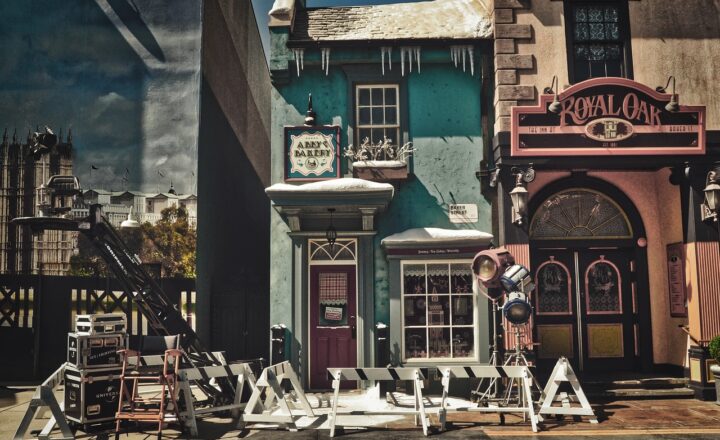Behind the Scenes of Iconic Movies: Secrets Your Favorite Films Don’t Want to Reveal
November 19, 2024

Movies have a unique power to transport us to different worlds, provoke emotional responses, and tell compelling stories that linger in our minds long after the credits roll. While the final product is often a masterpiece, the journey to create that cinematic experience is filled with trials, creativity, and secrets. In this article, we’ll take you behind the scenes of some iconic films to unveil the hidden elements that bring these movies to life.
1. The Art of Deception: Practical Effects vs. CGI
In recent years, many filmmakers have opted for CGI (computer-generated imagery) to create stunning visuals, but practical effects still hold a special place in the heart of cinema. Movies like Jurassic Park and The Thing showcase how practical effects can elevate a film’s quality.
– Jurassic Park: The iconic T-Rex was brought to life using full-sized animatronics created by Stan Winston’s team, along with CGI for moments that required more flexibility. This combination gave the creature a tangible, realistic presence that captivated audiences everywhere.
– The Thing: John Carpenter’s classic horror film is celebrated for its groundbreaking practical effects. The creative team used innovative techniques to craft the terrifying transformations of the alien, leading to some of the most memorable horror scenes in history.
This blending of practical effects with CGI demonstrates the cinematic world’s commitment to creating awe and magic on screen, revealing the art that occurs behind the scenes.
2. The Struggles of Casting: Not Always the Right Fit
Casting is one of the most crucial components of filmmaking, yet it often comes with unexpected challenges. Directors may have a specific actor in mind but face various obstacles at the casting stage. Did you know that many iconic roles were originally intended for different actors?
– The Matrix: Keanu Reeves almost missed out on Neo. Will Smith was initially considered for the role but declined it to work on Wild Wild West. This decision ultimately led to Reeves’ legendary performance.
– Back to the Future: Eric Stoltz was initially cast as Marty McFly, but the production team soon realized they needed someone different to match the character’s energy. Michael J. Fox was brought in, and the rest became history.
This glimpse into casting decisions reflects the unpredictable nature of filmmaking, showing how last-minute changes can create unforgettable performances that impact pop culture for decades.
3. Improvisation: When Actors Change the Script
Improvisation isn’t just about actors going off script; it’s about the chemistry and the sense of character that can only be captured in spontaneous moments. Iconic scenes often arise from actors’ creative instincts, leading to unforgettable dialogue.
– The Godfather: One of the most famous lines, “Leave the gun, take the cannoli,” was improvised by Richard S. Castellano during filming. This moment perfectly encapsulated the mix of warmth and coldness that defines the film.
– Casablanca: During one of the movie’s pivotal scenes, Humphrey Bogart improvised the line “Here’s looking at you, kid,” which has since become a timeless quote, showing the power of a moment born from spontaneity.
Improvisation allows for creativity that enriches storytelling, turning a scripted film into a candid work of art.
4. The Use of Symbolism: Layers of Meaning
Many directors embed intricate layers of symbolism in their films, helping enhance storytelling and engage the audience on a deeper level. Movies like Inception and The Shining are prime examples of how visual storytelling can convey complex themes.
– Inception: Christopher Nolan expertly uses the concept of dreams within dreams to question reality. The recurring image of spinning tops symbolizes the fine line between dreams and waking life. The simple top constantly rotating forces viewers to contemplate the nature of reality itself.
– The Shining: Stanley Kubrick layered the film with deep symbolism, including the use of colors and patterns. The infamous carpet designs replay in various scenes, creating an unsettling visual motif that enhances the narrative and tension throughout the movie.
Through careful attention to symbolism, filmmakers can engage audiences and elevate their story beyond words.
5. The Influence of Music: Soundscapes That Define Film
Music plays an essential role in shaping the tone of a movie. Iconic movie scores have the power to evoke feelings, set mood, and even make audiences feel attached to characters. Composers like John Williams and Hans Zimmer have crafted unforgettable soundtracks.
– Star Wars: John Williams’ score is renowned for its thematic melodies that match the epic saga of the films. The musical themes align perfectly with characters and situations, enhancing the viewing experience.
– Inception: Hans Zimmer’s use of the track “Time” helps build emotional tension, guiding viewers through the complex narrative structure. The music itself is an essential narrative device that pulls you into the world Nolan created.
The right score gives life to a film, influencing an audience’s emotions and perceptions at every turn.
Conclusion: The Magic of Movies Lies in the Unveiling
Behind the polished final product of any iconic film lies a world brimming with creativity, struggle, spontaneity, and layers of meaning. The best movies often have untold tales and behind-the-scenes secrets that present a charming juxtaposition between the perceived glamour of Hollywood and the hard work that goes unnoticed. The intricate artistry and collaborative spirit that are part of the filmmaking process give movies their lasting power and emotional resonance, reminding us that there is always more to discover beyond the screen.
Next time you sit down to enjoy your favorite film, take a moment to appreciate the secrets that lie behind its creation. You might find that there is even more magic in the movies than you initially realized!








